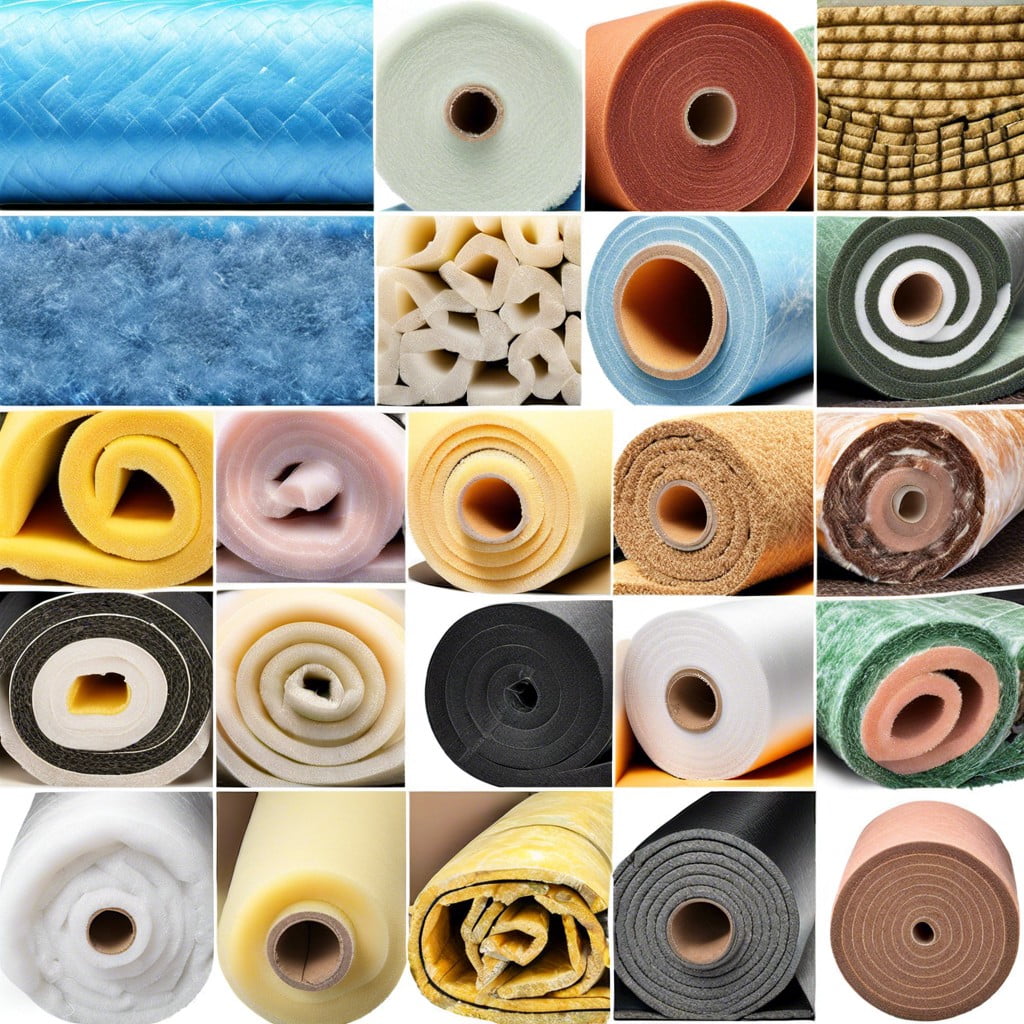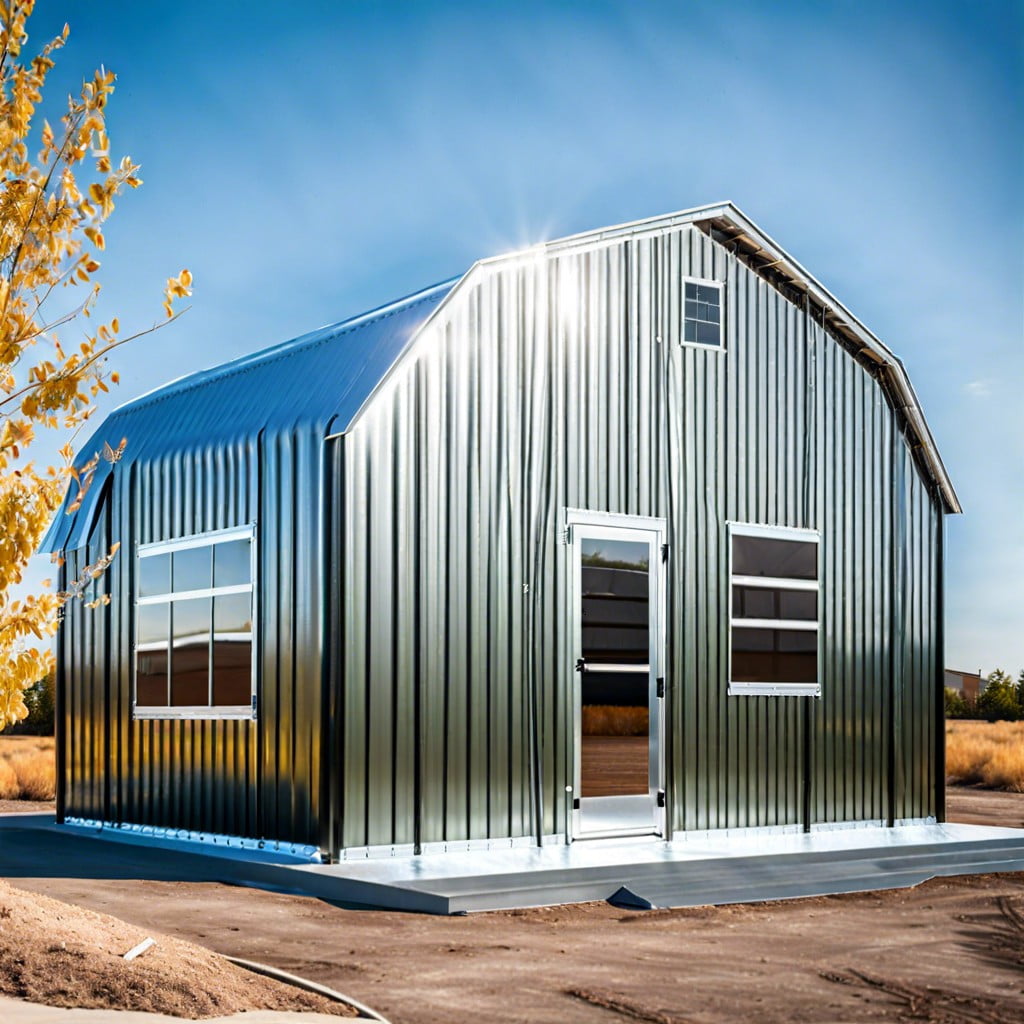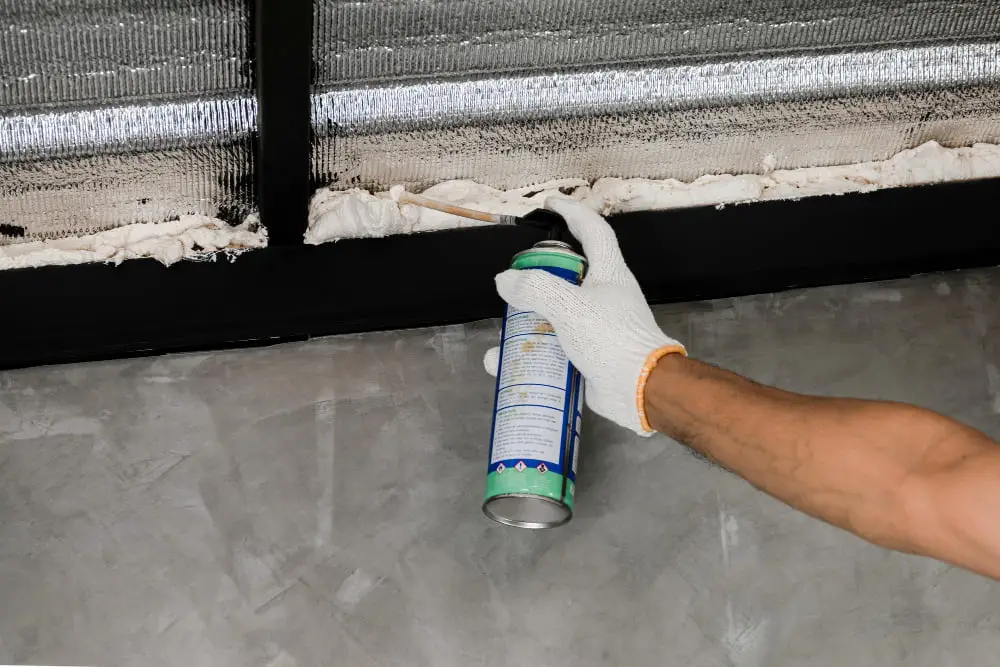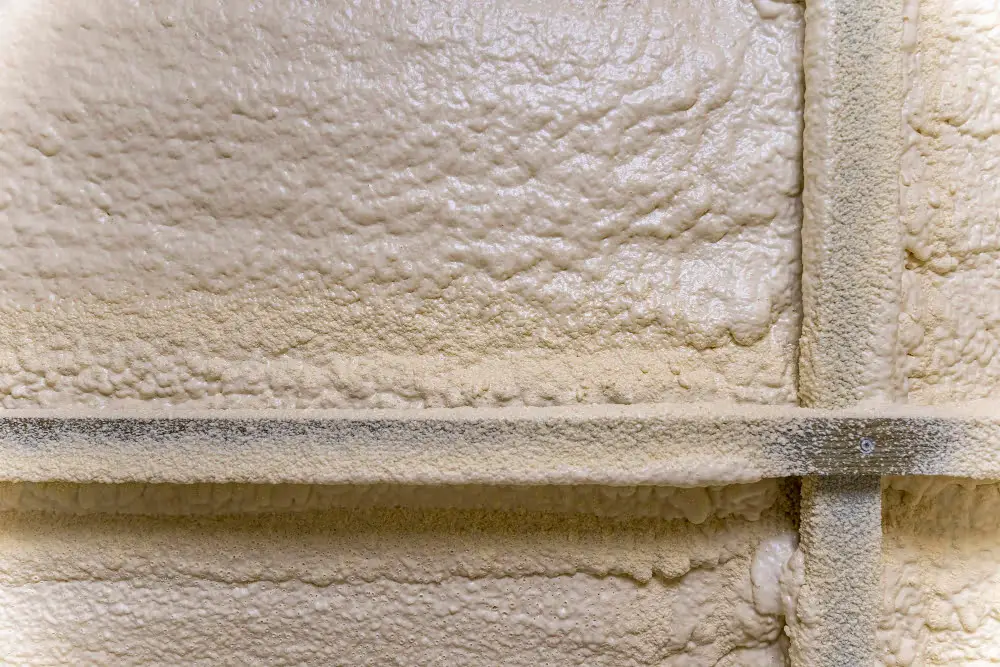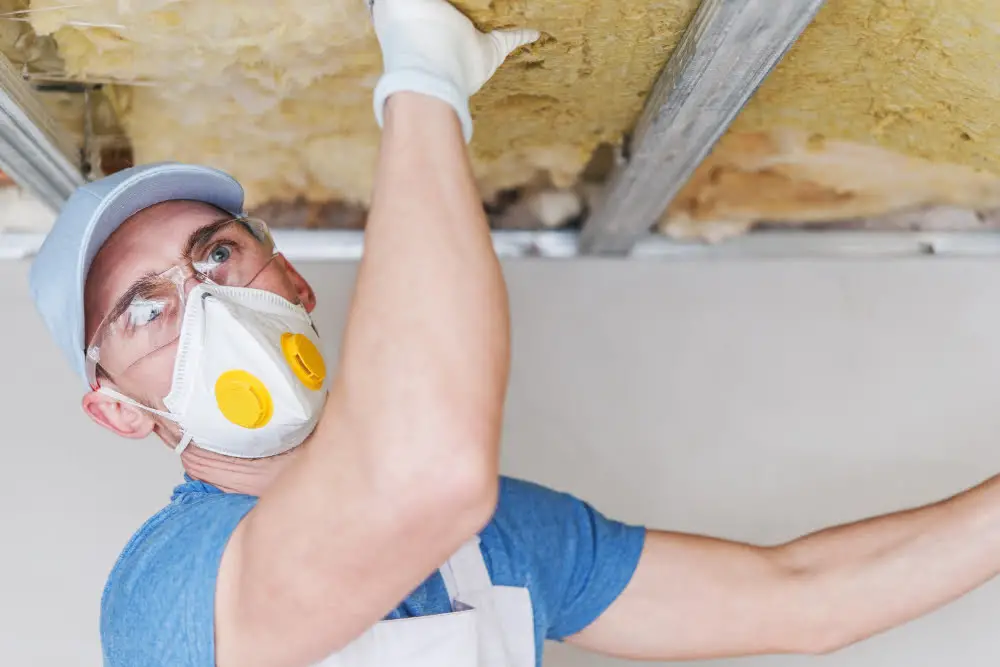Equip your metal buildings with the power of fiberglass blanket insulation because of its superior thermal performance and cost-effectiveness.
Key takeaways:
- Fiberglass blanket insulation is a cost-effective option for metal buildings.
- It provides thermal resistance and reduces noise transmission.
- Installation involves rolling out the insulation and securing it with staples.
- Fiberglass offers versatility and can be cut to fit irregular shapes.
- Consider factors like R-value, climate, and budget when choosing insulation.
What Is Fiberglass Blanket Insulation?
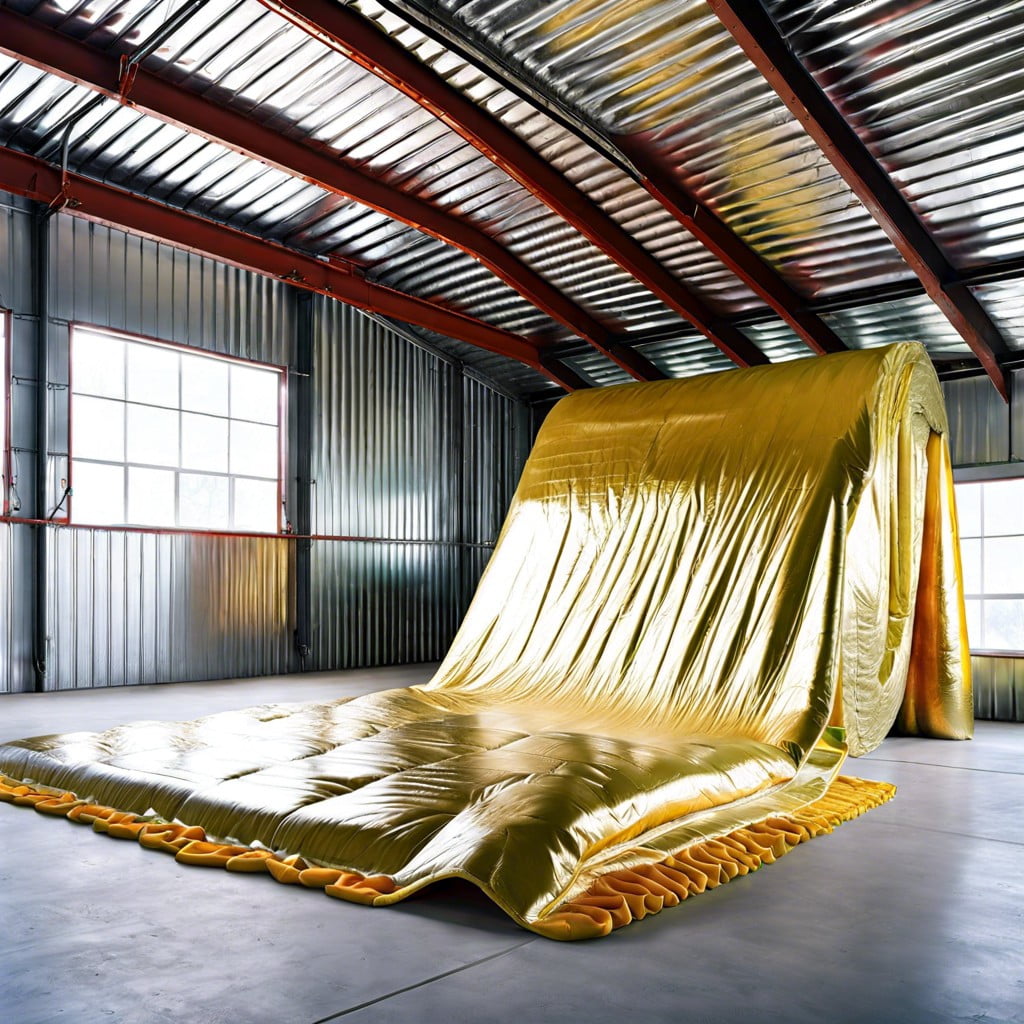
Fiberglass blanket insulation is a type of batting typically composed of fine strands of glass that are woven into a soft, flexible mat. The mat can then be easily rolled out and fitted between studs and beams in metal buildings, providing a continuous layer of insulation. It’s designed to fit snugly in standard spacing within construction frameworks, aiding in preventing heat transfer through convection, conduction, and radiation. This quality makes it an especially good option for regulating temperature and reducing noise in metal structures, where temperature fluctuation and acoustic issues are common concerns. The material’s non-directional fiber orientation gives it a high tensile strength, while a facing of foil or paper acts as a vapor barrier, protecting against moisture.
Fiberglass Insulation for Metal Buildings
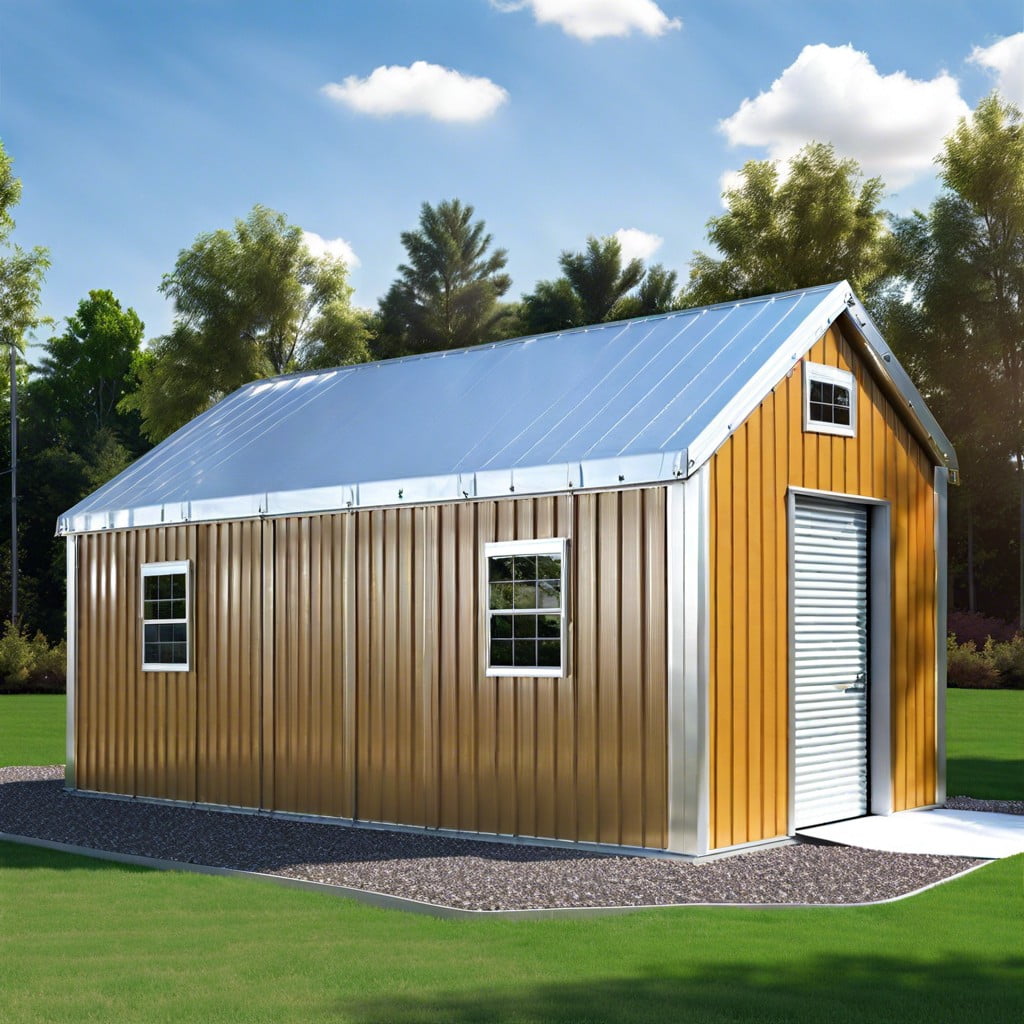
Fiberglass insulation in metal buildings primarily serves as a thermal barrier, keeping interiors warm in the winter and cool in the summer. This type of insulation, made from fine strands of glass fibers, is designed to trap pockets of air, slowing the passage of heat through the building envelope.
When selecting fiberglass insulation, R-value is the key measure of thermal resistance; the higher the R-value, the greater the insulating power. For metal structures, it’s also beneficial to choose insulation with a facing that acts as a vapor barrier to help control condensation.
Installation involves rolling out the blankets between purlins or girts, ensuring the spaces are completely filled without gaps or compressions that can reduce effectiveness. Proper protective gear is essential during installation to safeguard against skin irritation and respiratory issues from fiberglass particles.
Furthermore, fiberglass insulation is versatile. It can be cut to fit irregular shapes within the building, accommodating the unique corners and crevices often present in metal structures. This adaptability makes it an attractive option for custom or non-standard designs.
Installing Fiberglass Insulation in a Metal Building
Prior to installation, ensure the metal building is swept clean of debris. Measure the wall and ceiling areas to confirm the amount of insulation needed, taking into account the specific R-values required for your climate. Insulation comes in rolls which can be cut to fit the specific dimensions of the metal structure.
Start with the walls, fitting the fiberglass blanket between frame members. The insulation should be snug to minimize air pockets but not compressed, as this can reduce its insulative properties. It’s crucial to wear protective gear, including gloves, long sleeves, eye protection, and a mask, to prevent skin irritation or inhalation of fibers.
Use a staple gun to secure the insulation to framing beams, typically at intervals of 12 to 18 inches. Overlap sections of insulation slightly to ensure complete coverage and tape any seams with a specialized insulation tape for added air and moisture barrier integrity.
When moving to the ceiling, the process is similar. Support wires or metal bands can be used to hold the insulation up between the roof purlins. Ensure the fiberglass blanket unfurls fully to cover the expanse adequately, and take extra care with the edges and corners for a tight fit.
If a vapor barrier is necessary, it should face the interior of the building and be placed over the fiberglass blanket insulation before it’s secured. This helps prevent moisture from entering and condensing within the insulation layer.
Post-installation, inspect the insulation for any gaps and seal them with tape or spray foam insulation to ensure maximum energy efficiency. Remember, proper installation is key to the performance and longevity of the insulation system.
Spray Foam or Fiberglass Insulation
Choosing between spray foam and fiberglass insulation typically involves considering factors such as thermal performance, cost, installation complexity, and building requirements.
Spray foam insulation offers a higher R-value per inch, meaning it provides more thermal resistance than a comparable thickness of fiberglass. It creates an air seal, which can dramatically reduce energy costs by minimizing air leaks. However, spray foam is generally more expensive and requires professional installation, which can increase initial costs.
Fiberglass insulation, on the other hand, is more affordable and easier to install for those with DIY experience. Although it has a lower R-value per inch, it can be layered to enhance insulation effectiveness. Fiberglass does not create an air seal, so a separate vapor barrier may be necessary to manage moisture.
When deciding, consider the specific needs of the metal building, including climate, budget, and long-term maintenance requirements to ensure optimal energy efficiency and cost savings.
Disadvantages of Fiberglass in Metal Buildings
While fiberglass blanket insulation offers benefits such as cost-effectiveness and a variety of R-values, it also presents several drawbacks when used in metal buildings. The material can absorb moisture, leading to decreased insulation effectiveness and potential mold or mildew growth. Condensation issues are particularly pertinent as metal surfaces can sweat under certain conditions, exacerbating the moisture problem.
Additionally, fiberglass insulation requires careful handling as fibers and particulates can be released during installation, which may irritate skin, eyes, and the respiratory system. Thus, proper protective equipment is necessary.
Its insulation performance can be compromised if not installed correctly, emphasizing the need for precision and care during the installation process. Over time, fiberglass can settle, causing a reduction in its insulative properties and necessitating additional maintenance or replacement to ensure energy efficiency is maintained.
Lastly, fiberglass offers no structural support to metal buildings and can be susceptible to damage from pests if not properly sealed or covered, affecting its longevity and necessaire maintenance over time.
Fiberglass Blanket Insulation Benefits
Fiberglass blanket insulation offers multiple advantages when used in metal buildings. Its ease of installation is a significant benefit, as it can be quickly rolled out and fitted between frames without the need for specialized tools or equipment. This do-it-yourself-friendly attribute can lead to labor cost savings.
In terms of cost-effectiveness, fiberglass provides excellent thermal performance per dollar spent, making it an attractive option for budget-conscious builders. It’s also widely available, which can further reduce costs by minimizing shipping expenses.
The variety in available R-values, a measure of thermal resistance, allows builders to choose the appropriate level of insulation for their climate and the intended use of the building. Whether a project requires basic coverage or high-performance thermal resistance, there’s a fiberglass blanket product to match.
Finally, sustainability concerns are addressed through the option of selecting insulation that contains a significant percentage of recycled content, lessening the environmental impact of new construction projects.
Easy Installation
Fiberglass blanket insulation is known for its user-friendly application process. This ease of installation can help reduce labor costs and speed up the construction timeline. First, the blankets are rolled out and cut to fit the specific dimensions between the metal building’s framing members. They typically include a facing material which acts like a vapor barrier, preventing moisture from passing through.
The versatility of these blankets allows them to fit snugly into irregular spaces, effectively filling gaps that could otherwise lead to thermal bridges. Insulation support pins or wires can be used to secure the blankets in place before the interior finishes are applied.
With no need for special tools or equipment, the installation of fiberglass blanket insulation can be accomplished with common hand tools most contractors already possess. This simplicity also means that mistakes can be quickly rectified, ensuring a proper fit and maximizing the thermal performance of your metal building.
Cost-Effectiveness
Fiberglass blanket insulation is one of the most economical choices for metal building insulation. Its cost-effectiveness stems from both the material cost and the associated labor costs. When considering the long-term energy savings offered by an effectively insulated building, fiberglass blankets can significantly reduce heating and cooling expenses.
This insulation type is readily available in various thicknesses and densities, allowing for a tailored fit for any project, while keeping expenditures within budget. Additionally, fiberglass insulation’s durability means it will continue to perform over time, ensuring that the initial investment yields returns for years to come.
A Wide Range of R-Values
The effectiveness of fiberglass blanket insulation is measured in R-values, which indicate the material’s resistance to heat flow; higher R-values signify greater insulating power.
For metal buildings, the required R-value can vary based on climate, building use, and local building codes.
Typically, options range from R-8 for basic temperature control in mild climates to R-30 or higher for buildings in regions with extreme weather conditions.
This flexibility ensures that owners can choose the appropriate insulation thickness to meet their specific energy efficiency and comfort needs.
Selecting the right R-value is crucial in achieving optimal thermal performance and can significantly impact energy costs and indoor temperature stability.
Metal Building Insulation Calculator
When planning insulation for a metal building, a metal building insulation calculator is an indispensable tool. Here’s how it can assist in your project planning:
1. Precise Material Estimates: This calculator takes your building’s dimensions and automatically estimates the amount of insulation you’ll need, reducing waste and ensuring that you purchase the right amount of material.
2. Customized R-Value Recommendations: By factoring in your geographic location, the calculator can suggest the appropriate R-values to achieve maximum energy efficiency for your building.
3. Cost Savings: By providing an accurate estimate of required materials, the calculator prevents overbuying, helping you to budget effectively and potentially save on costs.
4. Time Efficiency: With rapid calculations, the tool saves time that would otherwise be spent on manual computations, allowing you to focus on other aspects of your construction project.
5. Ease of Use: Typically user-friendly, these calculators require only basic information about your project to deliver comprehensive results.
Utilizing a metal building insulation calculator streamlines your planning process, turning what could be a complex task into a simple step towards a well-insulated metal building.
The Brands You Trust
When selecting fiberglass blanket insulation, it’s wise to consider reputable manufacturers that are known for their quality and durability. Owens Corning and CertainTeed are industry leaders, offering products that consistently meet high standards. Johns Manville is another top-tier brand, prized for its formaldehyde-free insulation solutions. Knauf Insulation provides a sustainable option with its ECOSE technology, a binder made from renewable bio-based materials. These brands have established themselves through rigorous testing and steadfast performance, ensuring that your metal building is equipped with a reliable thermal barrier.
Choosing insulation from trusted manufacturers not only enhances the energy efficiency of your structure but also contributes to a better overall working and storage environment.
How to Buy Metal Building Kits and Insulation At Wholesale Rates
Purchasing metal building kits and insulation materials at wholesale prices can significantly reduce the cost of construction. Here’s how to optimize your budget:
1. Research Suppliers: Start by identifying suppliers that specialize in wholesale building materials. Compare their prices and product ranges online.
2. Bulk Purchasing: Wholesale rates often require bulk purchases. Consider the scale of your project and whether you have the storage space for large orders.
3. Direct from Manufacturers: Buying directly from manufacturers rather than retailers can offer substantial savings. Look for companies that sell to the public at wholesale rates.
4. Negotiate Prices: Don’t hesitate to negotiate. Suppliers are often willing to discuss rates, especially for large or regular orders.
5. Join a Buying Group: Pooling resources with other buyers in a cooperative or buying group can provide leverage for better rates due to the higher collective buying power.
6. Seasonal Deals: Keep an eye out for seasonal clearances or sales, which can offer wholesale or even below-wholesale prices.
7. Industry Partnerships: If applicable, establish partnerships within the industry. This can sometimes lead to offers or discounts not available to the general market.
8. Compare Shipping Costs: A low unit price can become expensive once shipping is factored in. Compare the total delivered cost when evaluating deals.
FAQ
Can I use fiberglass insulation in metal building?
Yes, you can use fiberglass insulation in a metal building, but it's crucial to choose a high-quality material for effective insulation.
What is the best thing to insulate a metal building with?
The best insulation for a metal building is fiberglass insulation.
Can fiberglass insulation touch metal roof?
Yes, fiberglass insulation can directly touch the metal roof of a building.
How efficient is fiberglass insulation for temperature control in metal buildings?
Fiberglass insulation is highly efficient in controlling temperature in metal buildings due to its ability to decrease heat transfer, hence conserving energy.
What are the considerations when installing fiberglass insulation in metal buildings?
When installing fiberglass insulation in metal buildings, it is necessary to consider factors such as the R-value for desired thermal performance, moisture control, proper fit within metal panels, and safety measures during installation.
Are there any risks or downsides to using fiberglass insulation in metal structures?
While fiberglass insulation is commonly used in metal structures, its susceptibility to moisture can lead to mold growth and reduced insulation properties over time.
Recap
